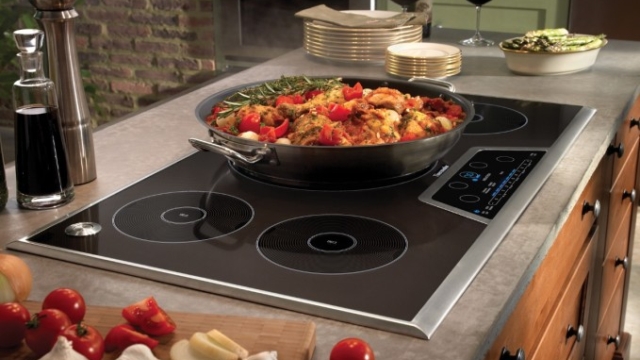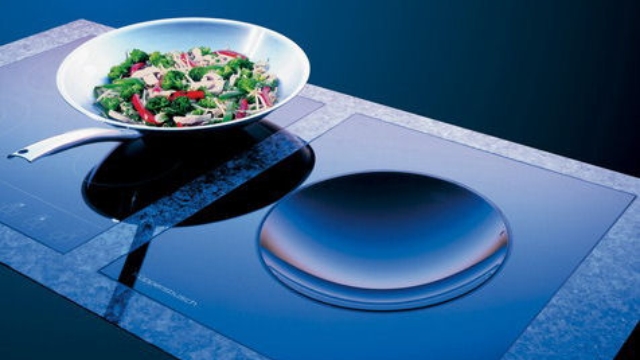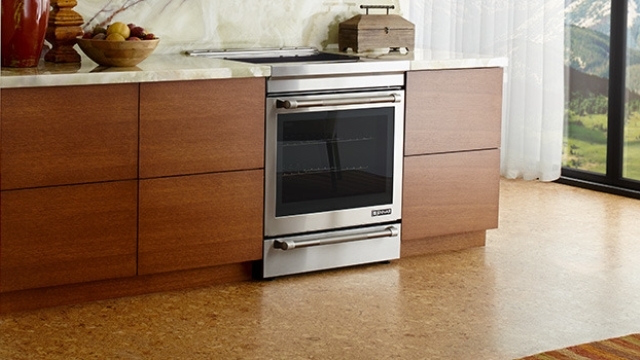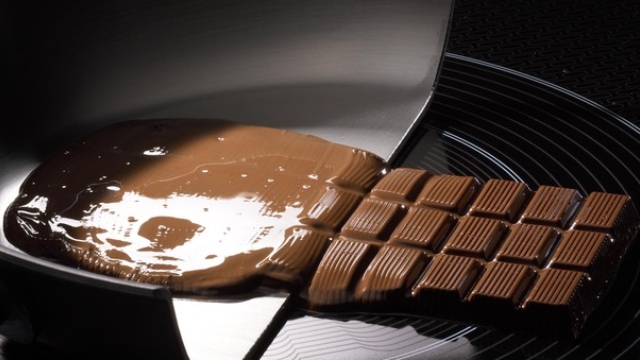The Induction Site
Search this site, or just roll your cursor over the colored boxes below the pictures.Advertisement:
Advertisement:
Advertisement:
Advertisement:




"Ask an impertinent question, and you are on the way to a pertinent answer."
—Jacob Bronowski
To keep this page from appearing in your browser at an absurdly great length, and to make it easy to spot the questions of interest to you, we have "folded up" all the often-lengthy answers: just the questions show.
For any question shown below, to see the answer just click the little [show answer] box at the right of the question. When you are through reading the answer, you can click the [hide answer] box (which will have replaced the "show" box) to re-collapse the answer and keep this page's display tidy and easily readable.
| 1. Are there health hazards from an induction unit's radiation? | [hide] |
The short answer is "Almost certainly not."
We only say "almost" because we are not medically trained and so not legally competent to give medical advice. But if one reviews the scientific literature, as we have done (and you can review the material at that link), it is hard to avoid the conclusion that even those with embedded pacemakers are at essentially no risk. But if you have any such device, consult your own physician.
| 2. Is an induction unit's radiation likely to interfere with other electronic devices? | [hide] |
The short answer is "Almost certainly not."
The electromagnetic field that induction units use is very high-frequency and has a very short range. Moreover, units do not generate any field unless they detect a chunk of ferrous metal of at least a minimum mass (meaning, normally, cookware) in place over them; and the cookware will absorb virtually all of the radiated energy. Beyond perhaps a foot away from the element surface, even with a pot or pan that is smaller than the element, the field strength is virtually zero.
| 3. Can I use any pot or pan on an induction unit? | [hide] |
No. With the technology available today—and for the reasonably foreseeable future—only cookware with a "ferrous" nature will work on induction. That means items of ceramic, glass, copper, or aluminum will not work. But all cast iron and enamelware (which is porcelain- or ceramic-coated cast iron) works, as does a large fraction of stainless-steel cookware. If you have a favorite piece of special cookware that is not induction ready, see the answer to the next question.
As to stainless steel cookware, what is important is that the outer (bottom-most) surface of the pot or pan be made with nickel-free stainless steel (often called "18/0" stainless). If the pot or pan is not being expressly marketed as induction-ready, use the "magnet test" (see FAQ #12 below).
| 4. Are there any sorts of adaptors for using non-ferrous cookware on an induction unit? | [hide] |
Yes. Such things are called "induction disks", and are basically a large ferrous skillet with no sides; you put the disk on the cooktop and the glass or ceramic or whatever piece of cookware on the disk.
Mind, such disks essentially turn an induction element into a coil-type element, thus losing many of induction's advantages: efficiency is much lowered, excess heat is radiated, the instant-adjust ability is gone. But if you have, say, a glass coffee-maker that you treasure, you don't have to switch to metal.
| 5. Does induction cooking require special techniques? Are there induction cookbooks? | [hide] |
To the first, Yes and No. "No", in that induction is simply a source of cooking heat, so cooking on an induction unit is in principle no different from cooking on any form of heat, whether gas or electric coil or radiant (or, for that matter, coal or wood); that is why there are no special "induction recipes" or "induction cookbooks".
But Yes in another sense, because induction equipment is so much more powerful—owing to its efficiency—than any cooking method you are likely to be familiar with that you have to get used to what settings to use for what. By far the commonest problem new users encounter is that in the beginning they regularly burn or badly overcook things, because they don't realize how much heat the unit generates how quickly.
Our recommendation for those getting their first induction unit—whether a splendid built-in or a modest countertop unit—is that you begin by practicing. Put an open pot or a skillet of water on and boil it. Repeat this several times with different-sized pots and pans and with differing amounts of water and at differing power settings. Get a good feel for how quickly the pot heats up at what setting. After several trial runs with boiling water, cook something simple and inexpensive, so that if you burn it there's no real loss—frying up a couple of eggs is probably a good idea. The exact ways you go about learning your new unit's capabilities are up to your judgement, but do practice—don't start out by turning an expensive steak into a lump of burnt charcoal.
| 6. Isn't the cooktop surface glass? Will it crack or scratch? | [hide] |
Yes, the cooktop surface is glass—but not ordinary glass. Induction cooktops, like all "smoothtop" stoves, are surfaced with what is called "ceramic glass", which is very strong and—crucial here—tolerates very high temperatures and sudden temperature changes. There are at least two principal makers, Schott ("Ceran") and EuroKera.
Ceramic glass is very tough, but if you drop a heavy item of cookware—say a cast-iron skillet—several inches onto it, it may crack. In everyday use, however, it is wildly unlikely to crack. It is not like cooking on a windowpane!
Scratching, however, can occur, though as a rule only if one is careless. The most likely cause of scratching will be sliding rough-bottomed cookware on the surface; "rough-bottomed" will almost invariably mean cast-iron cookware. There are at least two ways to avoid such scratching (besides just being careful): one, put a piece of parchment paper—available at any supermarket—under the pan; two, make the bottom of the pan smooth using sandpaper (extremely simple, but no one ever seems to think of it—sanding the inside is often discussed, but not the outside), using first coarse, then fine paper, then re-coating the seasoning.
| 7. Are there units with built-in downdraft venting? | [hide] |
That we know of, no—though most can work with an external downdraft unit. But you should be aware that most serious cooks have a very negative view of downdraft venting. For a more general discussion of venting, see the answer to the next question.
| 8. Do induction cooktops require more or less ventilation than other types? | [hide] |
The question of venting is a complex one. It seems commonly (but not universally) agreed that induction units do require less venting than most other kinds, presumably because there is so little waste heat and hence hot air. Much venting advice of a general nature derives from the need to apply universally, including to the still-common gas-fueled cooking. Since gas cooking produces especially large amounts of water vapor compared to other methods, as well as toxic carbon monoxide, it requires significantly more venting capacity than any other method (including induction)—so "general" advice is likely to greatly overstate the venting needs for other forms of cooking. One cooktop maker suggests that about 2/3 the normal venting capability suffices with induction.
What is "normal" venting? Recommendations from appliance-maker trade associations—not completely unbiased sources—suggest air-movement venting capabilities of about 250 CFM (air movement in Cubic Feet per Minute) for 30-inch units (with wall-mounted hoods, not on islands), or 300 CFM for 36-inch units. Using the "two-thirds" rule of thumb, that would become, for induction, 170 CFM or 200 CFM, depending on cooktop width. One professional chef remarked that in many commercial kitchens with induction "exhaust fans can be smaller, and are frequently not installed, or left turned off entirely." Mind, building codes may (but, curiously, often do not) require some form of ventilation in a residential kitchen.
The crux, though, is what and how you cook. On one hand, a household of two adult vegetarians with a large kitchen and 10-foot ceilings in a strikingly air-tight house has never once needed ventilation turned on for stovetop cooking in ten years of using induction every day (and there are no grease deposits atop the cabinets). On the other hand, a household of several persons that does a lot of meat cooking—especially at high heat, as with frying or grilling, with their consequent grease fumes—would doubtless be an entirely different matter.
An interesting real-world study of households found that:
A sizable minority of the sample did not use their ventilation systems with any regular frequency, especially when using the oven. Noise, as the reason to avoid using the ventilation system, is not a surprising finding. Noise might explain a reluctance to use a ventilation system, especially in a busy family kitchen. However, half the sample did not even think ventilation was needed. [emphasis added]
Mind, many of those households did a lot of their "cooking" in ovens and microwaves, but still . . . .
Much depends on how simple or difficult the vent construction would be. If you are changing to induction and already have a vent system in place, you need do nothing. If you are building anew, you can usually design in whatever ducting you want or need. (Mind, those who are punctilious about energy conservation are often unhappy with exterior ducting, for a host of reasons beyond our scope here.) It is in a renovation in which you cannot—or prefer not to—use the existing venting that problems can arise, owing to structural blockages for the proposed new ducting.
If you do not regularly generate large amounts of greasy smoke, a decent alternative may be a recirculating ("ductless") hood, which passes the drawn-in air through one or more filters, usually activated charcoal, then recirculates the cleaned air back into the kitchen. That has the immense advantage that no ducting need be installed (and usually meets any code requirements). Some sources are negative on them because they do nothing about carbon monoxide or water vapor, but as we noted above, those are of concern only when gas is in use. Granted, ductless types may not suit for heavy grease-laden smoke, but they're worth considering. Look for models with high CFM and multiple filters.
| 9. I've read that induction units are noisy—what's the scoop? | [hide] |
Induction units are not, or not much; cookware sometimes is.
There are three possible sources of noise associated with induction cooking. One is a fan: some units use "passive cooling" for their under-the-hood electronics, which means that they rely on the natural flow of air; others use "active cooling", which means a small fan kicks in when the unit gets especially hot, and helps keep the airflow moving at a satisfactory rate. Neither method is inherently superior, but most units with fans will generate a soft but perceptible hiss when the fan kicks in. Few if any users have found the sound to be noticeable enough to be bothersome.
A second source of noise is an occasional faint "tick" sound that can occur when the electronics powering an element cycle On or Off, which they sometimes do to keep the energy flow constant. Again, few if any find it noticeable or distracting.
The third noise source is not from the cooktop but from certain cookware when used on induction: the sound is usually described as a humming or buzzing. The degree to which this noise occurs varies with the particular item of cookware, the particular unit, and the power setting in use; the extent to which it seems annoying varies tremendously from person to person—some don't even notice it (someone else has to point it out to them), while others find it highly irritating. There are three possible causes for such noises:
1) Encapsulated "slugs": most induction-cookware makers encapsulate a ferromagnetic "slug" in the base of their cookware as the area that absorbs the energy field and creates the heat. If the slug is simply encapsulated—meaning not actually welded to the base—it can move microscopically within the encapsulation; thus, subjected to a high-frequency field, it can vibrate slightly and buzz or hum. Better-quality cookware rarely manifests this effect.
2) Loose-fitting handles on cookware can vibrate. Welded-on handles won't do this, and rivetted ones (used by many top-flight makers) shouldn't, but on—again—less-expensive brands they may anyway.
3) Pans with bottoms not completely flat can vibrate slightly on the cooktop surface; this effect is especially noticeable at high-power settings and again is something of an imperfection in the pan, not a systemic induction issue.
(The cookware types with the fewest noise issues are, logically, the most solid or massive: one-piece cast iron, and enamel-coated cast iron.)
| 10. How can I replace an existing range with an induction unit? | [hide] |
The easiest way is to buy a new range with an induction cooktop built into it. There are already several such induction-topped ranges on the market, both slide-in and free-standing, and doubtless more will be along soon.
If none of those appeal to you, we have some suggestions on ways to combine an induction cooktop and separate oven. Note that we strenuously recommend that if it is at all possible in your kitchen, when you move from your existing range, you go to a cooktop and wall oven—use the space under the cooktop for storage and use the freed-up storage space elsewhere in the kitchen to mount the oven. Your back and knees will thank you for as long as you live.
| 11. Can I use "commercial" units in a home kitchen? | [hide] |
Yes. Unlike gas-powered commercial appliances, which are too dangerous for home-kitchen use and are thus banned by building codes, induction units do not generate absurd amounts of waste heat and thus a severe fire risk. You should nevertheless check with your local building department before buying or building in commercial induction units—building codes are different in every county of the U.S. If your county's code turns out to forbid "commercial" kitchen equipment in generic terminology, you can probably get a variance for induction units if you explain how they operate and why they're safe.
Usually residential units will be a better choice for home kitchens, and almost always a better value: commercial units tend to be expensive because they have to be able to hold up under virtually continuous use in often extraordinarily demanding work conditions. In some circumstances, though—such as single-element or dual-element units—they can be competitive or even better deals than what is available in "residential" lines.
If you are interested in commercial equipment for residential use, pay especial attention to unit dimensions and required cutout sizes, because commercial kitchens are not limited by the standard residential kitchen-countertop 24-inch depth: units are often of such a size that you would not be able to mount two front to back in a 24-inch space.
Except for the most demanding home cooks, residential units all carry more than sufficient "firepower" than there is little or nothing to be gained by going to commercial gear, unless one feels that one needs all of one's units to have stupendous capabilities. Remember: the gas BTU/hour equivalent of induction is at least 7185 times the power in kW, so that even a routine-size 2.4-kW home-cooktop element is well over 17,000 BTU/hour of heating power. But if you want commercial, you should be able to use it. (But remember also that what goes out must first go in: be sure your wiring can support the loads of commercial-level heating firepower.)
| 12. How can I determine if a piece of cookware is induction-ready? | [hide] |
Assuming you can examine it in person (as in a store), just carry along a small magnet, such as the sorts used to decorate refrigerator doors. If the magnet clings well to the outside bottom of the pot or pan, it will work on induction. If the magnet does not cling, or does so only very weakly, the item will not work on induction. (But see FAQ #4 above).
| 13. There are so many choices! What units do you recommend? | [hide] |
Our task, we feel, is to present you, our visitor, with as much information and guidance as we can. There are so very many variables that go into determining what units are good fits for what users that making recommendations would be foolish at best, and probably counter-productive. And since we have added retail selling to the site, making recommendations would put us in a tricky ethical position.
That said, there are a few things you should keep in mind above and beyond various units' actual specifications. While it is really still too soon for meaningful reliability track records to have emerged for induction units, you can—and should—consider the various makers' general reputations for quality, reliability, and (perhaps above all) customer service. A company that has a bad name on the street for kitchen-appliance reliability, or for poor customer relations, is probably a brand to avoid. There are no easy ways to determine reputations, but if you take your time and remember that Google Is Your Friend, you can find out a lot (especially good sources are on-line discussion forums, where actual customers relate their experiences for others).
Nowadays, many brands, including the most well-known, have their units manufactured in places where labor is cheap—eastern Europe or the Orient are common locations. But there is a difference between a company with a name and reputation to consider that designs units and oversees their production and a no-name "company" that just slaps a cute little brand-name badge on a stock unit rolling off the assembly lines at some undisclosed location. Ask yourself "Who are these people? Where was this company ten years ago, and where are they likely to be ten years from now?" If you aren't comfortable with the answers, don't buy the products. But keep in mind that there are many old, well-established and respected appliance companies of which you may not know much because till recently they have operated in other parts of the world than yours. You might already know Miele and Gaggenau, but do you recognize Fagor? Smeg? Kuppersbusch? Don't dismiss a company because you aren't personally familiar with it—look them up. Again: Google Is Your Friend.
Finally, look at the metric we so often hammer on here: price per kilowatt. Ultimately, cooking power is what you're buying, so be sure you know what you're paying for it. The cost per kilowatt is not the end of the discussion, it's the start: but you need to start somewhere.
Advertisement:
Advertisement:
All content copyright © 2002 - 2025 by The Owlcroft Company.
This web page is strictly compliant with the W3C (World Wide Web Consortium) Extensible HyperText Markup Language (XHTML) Protocol v1.0 (Transitional) and the W3C Cascading Style Sheets (CSS) Protocol v3 — because we care about interoperability. Click on the logos below to test us!
This page was last modified on Monday, 22 January 2024, at 12:46 am Pacific Time.